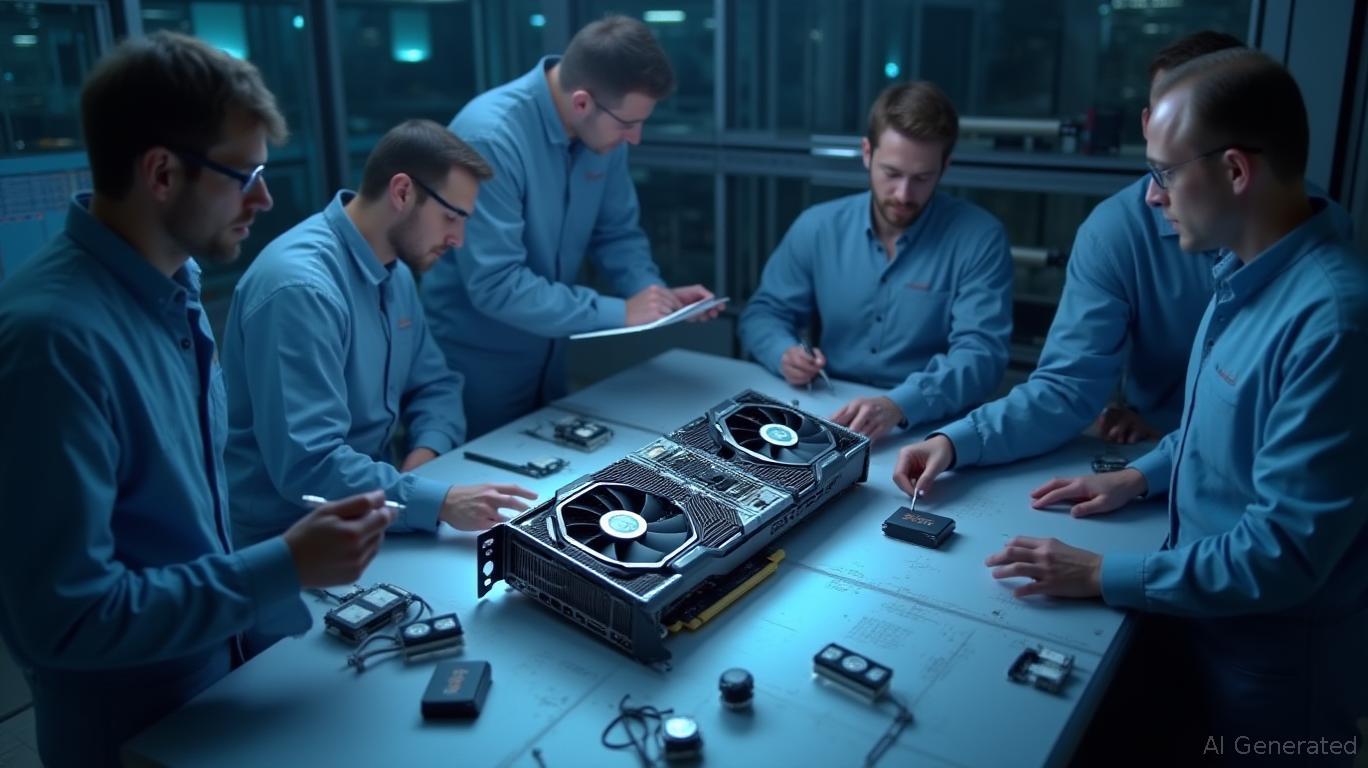AMD's AI Crossroads: Can Software Gaps Be Outrun by Hardware Gains?
The semiconductor industry's AI arms race has thrust
into a pivotal position. With its data center revenue surging 24% year-over-year and its MI300X GPUs achieving parity with NVIDIA in AI inferencing benchmarks, the company appears primed to capitalize on the $450 billion AI chip opportunity. Yet its stock trades at a 31x 2025 P/E multiple—nearly 40% below NVIDIA's 51x—hinting at deep investor skepticism. Is AMD's valuation discount justified, or does it understate the transformative potential of its AI strategy?The answer hinges on resolving a critical paradox: AMD's hardware progress has outpaced its software ecosystem maturity, creating a mismatch between its technical capabilities and market adoption. While the company's ROCm software stack has made strides in developer tools and open standards, it still lags behind NVIDIA's CUDA ecosystem, which dominates 90% of AI training workloads. This software gap, compounded by executive turnover in key AI talent roles, has left investors wary of AMD's ability to translate silicon superiority into revenue.
The Valuation Conundrum
AMD's current valuation reflects two intertwined risks:
1. Near-Term Execution Uncertainties: Q2 2025 EPS estimates have been slashed to $0.57 due to $800 million in one-time charges tied to its China-specific MI308 GPUs. These charges, while non-recurring, have forced analysts to lower their 2025 consensus EPS to $3.96—a 14% drop from estimates 90 days ago. The resulting 31x P/E multiple contrasts sharply with NVIDIA's 51x, pricing in both AMD's margin pressures and ecosystem deficits.
- Long-Term Ecosystem Barriers: NVIDIA's 20-year head start in building developer tools, libraries, and partnerships has created a “CUDA moat” that AMD's ROCm is only beginning to breach. While AMD's open standards approach appeals to hyperscalers wary of NVIDIA's dominance, the lack of enterprise-ready software for training workloads remains a critical bottleneck.
Where AMD's Edge Lies—and Falters
Hardware Strengths:
- The upcoming MI450X GPU, optimized for rack-scale AI inference, promises 3x performance improvements over the MI300X.
- AMD's partnership with Microsoft Azure for custom AI chips has secured a $10 billion+ cloud deal, demonstrating enterprise demand for its silicon.
Software Weaknesses:
- ROCm's developer community remains 70% smaller than CUDA's, with limited support for critical frameworks like PyTorch.
- Key AI hires have left AMD over the past 18 months, raising concerns about talent retention in a hyper-competitive market.

The Inflection Point: 2026 and Beyond
Analysts project AMD's EPS to jump 33% in 2026 to $5.28 as MI450X deployments scale, but this assumes two critical pivots:
1. Software Catch-Up: AMD must accelerate ROCm's integration with major cloud platforms and open-source frameworks. Recent hires from Google's AI team and partnerships with Intel's oneAPI suggest progress, but execution timelines remain opaque.
2. Regulatory Resolution: U.S. export restrictions on China-bound GPUs—currently limiting AMD's MI308 sales—could thaw if a U.S.-China trade deal emerges. A resolution here could unlock a $20 billion addressable market, but the Trump administration's hardline stance on GPU exports complicates this timeline.
Investment Thesis: Buy the Dip, but Set Traps
AMD's 31x multiple offers a compelling entry point if investors are willing to bet on long-term AI adoption overcoming near-term execution risks. The stock's current price implies a 5% upside to consensus 2025 estimates, but this understates two tailwinds:
- Enterprise AI spend is accelerating: 68% of Fortune 500 firms now prioritize AI chip investments, per Gartner, creating a multiyear revenue runway.
- NVIDIA's pricing power has limits: AMD's open standards model could carve out a 25-30% market share in inference workloads by 2027, eroding NVIDIA's margins.
Risk Management:
- Short-Term Sell Signal: If Q2 earnings miss consensus by more than 15% (i.e., EPS below $0.49), it signals deeper-than-anticipated margin erosion or software adoption delays.
- Buy Signal: A 20%+ increase in cloud AI revenue guidance for 2026, paired with news of major framework integrations (e.g., PyTorch support), would validate AMD's ecosystem strategy.
Final Verdict
AMD's valuation reflects a market overly fixated on its present-day software shortcomings and regulatory hurdles. While these risks are real, the company's hardware roadmap and cloud partnerships position it to capture a meaningful slice of the $450 billion AI chip market by 2027. Investors who can tolerate near-term volatility—and who believe in open standards over proprietary ecosystems—should consider a gradual build into AMD shares. The 31x multiple is a discount to both its growth trajectory and NVIDIA's premium, making it a compelling contrarian bet in an AI-driven economy.

Comments
No comments yet